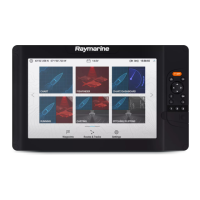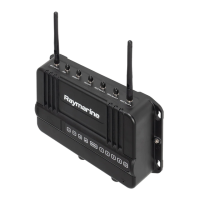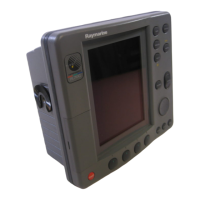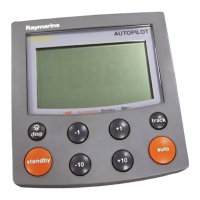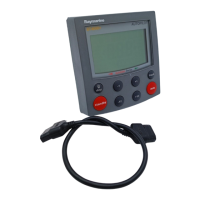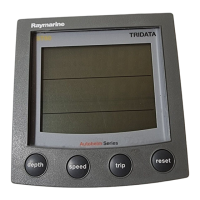2. Select Save data to card from the Import/export menu: Homescreen > My data > Import/export.
A pop-over menu is displayed.
3. Select the desired option:
•
Save all data to save (export) all waypoints, routes and tracks.
•
Save waypoints to save (export) all waypoints.
•
Save routes to save (export) all routes.
•
Save tracks to save (export) all tracks.
4. Select Save to save the user data using the default filename. Alternatively:
i. Use the onscreen keyboard to enter your own filename and then select
Save.
5. Select
OK to return to the Import/export menu, or select Eject card to safely remove the memory
card.
The user data file is saved to the ‘\Raymarine\My Data\’ directory of your memory card in gpx format.
Importing user data
You can import user data (i.e.: GPX format Waypoints, Routes and Tracks) to your display.
1. Insert the MicroSD card that contains your user data files into the memory card reader on your
display.
2. Select
Import from card from the Import/export menu: (Homescreen > Settings > Import/export
> Import from card).
3. Navigate to your User data file (.gpx).
4. Select the relevant GPX file.
Your user data has now been imported.
5. Select
OK.
4.7 EV-1 heading sensor
You can connect an EV-1 heading sensor to your display, this will ensure that accurate heading data
is available, regardless of vessel movement.
The EV-1 heading sensor will automatically calibrate (linearize) itself while the following conditions
are met:
• vessel speed is between 3 to 15 knots, and
• at least a 270° turn has been made.
Note:
The time it takes for automatic calibration can be reduced by completing a full 360° turn at
between 3 to 15 knots.
After the initial calibration has been completed a notification will be displayed and a Max deviation
value will be reported in the
EVO COMPASS section of the This display menu. If dashes are
displayed then the calibration has not been successful.
If the Maximum deviation is 45° or greater, it is recommended that either the EV-1 is relocated, in
a location with less magnetic interference, or that any devices causing magnetic interference are
moved farther away from the EV-1.
Manually adjusting an EV-1 heading sensor
If there is a difference between Heading and the reported COG (Course Over Ground), which is not
attributable to tide and wind conditions, then you can adjust the EV-1 heading sensor’s settings
to compensate.
The EV-1 settings can be accessed from the
This display menu: Homescreen > Settings > This
display > EVO set-up.
38
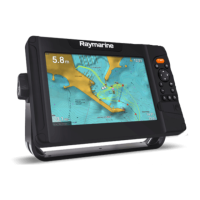
